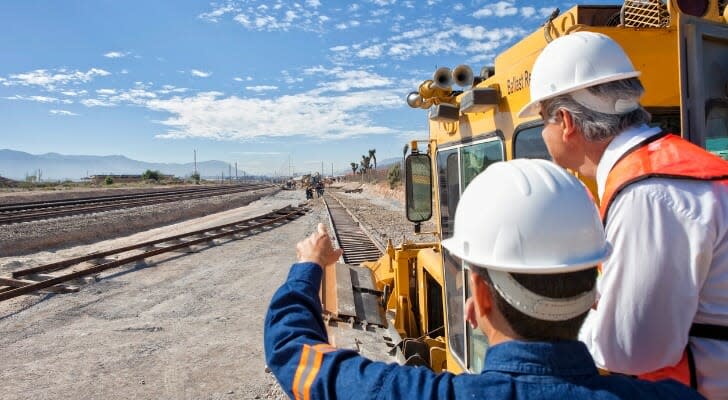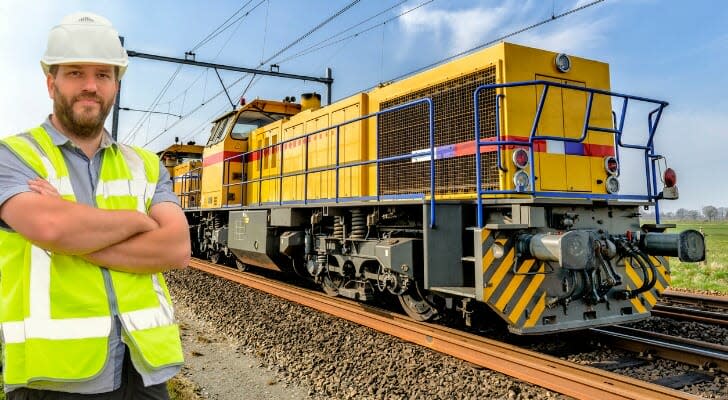What Is the Railroad Retirement Program?
The Railroad Retirement Program is a federal program that extends retirement benefits to railroad employees. The program was established in the 1930s and in addition to retirement benefits, it also pays survivor, unemployment and sickness benefits to eligible railroad workers and their families. The Railroad Retirement Board is responsible for overseeing the program. If you’re a railroad employee, here’s more on how the program works and where it can fit into your retirement plans.
How the Railroad Retirement Program Works
The Railroad Retirement Program is similar in nature to Social Security, in terms of the benefits it offers. But there are several key differences between the two.
First, it’s important to note that railroad workers only pay money into the Railroad Retirement plan, not Social Security. The money railroad workers pay in taxes goes into funding the Railroad Retirement Program and the benefits it pays. You can’t double-dip and receive full benefits from both railroad retirement and Social Security.
Benefits are paid out to workers based on the number of months of service they have as railroad employees and their earnings credits. Employees receive one month of credit for every month they work for an eligible railroad employer, regardless of how many days of the month they actually worked.
The Railroad Retirement Board is responsible for administering retirement benefit payments. These benefits can’t be paid until you end your railroad employment. You also have to reach a certain age threshold to apply for railroad retirement benefits.
The earliest age that you could draw railroad retirement benefits is 60, if you have 30 years of qualifying railroad service. You can receive your full railroad retirement benefit at this age if you meet the 30 years of service retirement. Otherwise, you can start drawing railroad retirement benefits at age 62. But just like Social Security, your benefit amount is reduced for each year before full retirement age that you start drawing benefits.
Spouses can also receive retirement benefits once they reach a certain age. The benefit amount they’re able to draw depends on how old their spouse is, the number of years of service they have as a railroad employee and when they retire. But generally, if you retire at age 60 with 30 years of railroad service your spouse would be able to begin receiving benefits once they turn 60 if they haven’t already. The same rules apply for reducing benefit amounts when retirement benefits are taken before your spouse reaches their full retirement age.
Railroad Retirement Program Benefits
Benefits from the Railroad Retirement Program, which is a defined benefit rather than a defined contribution program, are broken up into two tiers. The first tier includes retirement, survivor and disability benefits while the second tier of benefits functions like a pension plan. Tier 1 benefits are available to railroad workers who have at least 10 years of service for an employer covered under the Railroad Retirement Act. The years of service requirement is shorted to five years for employees who got started working for the railroad after 1995. Again, you can receive your full railroad retirement benefit starting at age 60 if you have 30 years of qualifying service. Normal full retirement age for railroad benefits is 65 or 67, depending on the year you were born.
Tier 1 also provides a smaller annuity payment to eligible railroad employees who have at least 25 years of service, began working for the railroad prior to Oct. 1, 1981, and are still working for the railroad. The minimum age to receive this added benefit is 60 for workers with at least 30 years of service.
Aside from retirement benefits, Tier 1 also pays out:
Disability benefits, similar to Social Security disability benefits
Occupational disability benefits for people who can still perform certain types of work
Spousal retirement benefits, including benefits for divorced spouses
Children’s survivor benefits if a railroad employee parent is deceased
Widow’s survivor benefits
The amount paid out for these benefits is tied to the railroad employees years of service and their age can also come into play for spousal benefits.
Tier II benefits pay out something similar to a private pension, which is based on the employee’s average income for their five highest-earning years. The length of service an employee has also influences the minimum pension payment they’ll receive through the Tier II benefits. Current spouses and surviving widows can also receive this benefit.
While you could technically still work and receive railroad retirement benefits the way you could with Social Security, there is one catch. You can’t be employed by any organization covered under the Railroad Retirement Act. In other words, if you want to receive railroad retirement benefits and still work you’d have to choose something outside the railroad industry.
And again, like Social Security, your benefit amounts could be reduced based on what you earn if you haven’t reached full retirement age yet. For 2020, you can earn up to $18,240 without affecting your railroad retirement benefits. For every $2 you earn over that amount, your benefits are reduced by $1. In the year you reach full retirement age, the income threshold increases to $48,600 and the reduction is $1 for every $3 in earnings over that amount.
How to Apply for Railroad Retirement Benefits
Railroad retirement benefits don’t start automatically; you have to apply for them just like Social Security. You can do that by contacting your closest Railroad Retirement Board office.
From there, you’ll have to complete the application for benefits. You can do so up to three months before your actual retirement date. Applications can be submitted over the phone, by mail or in person.
When applying for railroad retirement benefits you’ll have to provide:
Proof of your age
Documentation of any Social Security benefits you’re receiving
Proof of any military service, if claimed
Direct deposit information for your bank
Remember, you have to sever your employment with the railroad before you can apply for benefits. If your application is in order, it can take 30 to 60 days to start receiving benefits.
The Bottom Line
The Railroad Retirement Program can offer generous financial benefits to railroad workers and their families. Specifically, it pays survivor, unemployment and sickness benefits to eligible railroad workers and members of their families. If you work for the railroad, it’s important to consider how these retirement benefits can help with shaping your long-term financial plan. While similar to Social Security, it is important to understand how Railroad Retirement Program benefits differ from those of Social Security.
Retirement Tips
Consider talking to a financial advisor about when to take railroad retirement benefits and how to manage those benefits if you work for the railroad. If you don’t have a financial advisor yet, finding one doesn’t have to be stressful or complicated. SmartAsset’s financial advisor matching tool can help you connect quickly with an advisor locally. If you’re ready, get started now.
Aside from employer-sponsored retirement plans, consider other ways to save and invest for the future. A traditional or Roth individual retirement account is one option that can offer tax advantages. With a traditional IRA, your contributions may be tax-deductible while a Roth IRA could offer tax-free withdrawals in retirement. Taxable brokerage accounts can also be useful in rounding out your investment strategy.
Photo credit: ©iStock.com/MiguelMalo, ©iStock.com/teppakorn tongboonto, ©iStock.com/Sjo
The post What Is the Railroad Retirement Program? appeared first on SmartAsset Blog.



